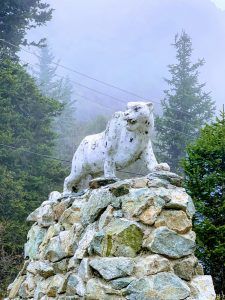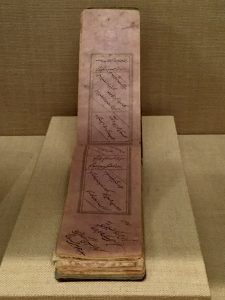by Shadab Zeest Hashmi
 In Tian Shan mountains of the legendary snow leopard, errant wisps of mist float with the speed of scurrying ghosts, there is a climbers’ cemetery, Himalayan Griffin vultures and golden eagles are often sighted, though my attention is completely arrested by a Blue whistling thrush alighting on a rock— its plumage, its slender, seemingly weightless frame, and its long drawn, ventriloquist song remind me of the fairies of Alif Laila that were turned to birds by demons inhabiting barren mountains.
In Tian Shan mountains of the legendary snow leopard, errant wisps of mist float with the speed of scurrying ghosts, there is a climbers’ cemetery, Himalayan Griffin vultures and golden eagles are often sighted, though my attention is completely arrested by a Blue whistling thrush alighting on a rock— its plumage, its slender, seemingly weightless frame, and its long drawn, ventriloquist song remind me of the fairies of Alif Laila that were turned to birds by demons inhabiting barren mountains.

The sense of enchantment is powerful and not entirely unexpected. “Ay Pari” (Oh Fairy!), sung by the Badakhsan Ensemble, I imagine as a song sung in a human language in response to the eloquent whistle of the thrush, really a fairy under a spell. The word “fairy” in English may have been derived from the ancient Zoroastrian Persian “pari:” the first mythic creature I remember from lores and lullabyes and the television show Alif Laila (Arabian Nights) in Urdu. The song, in an eastern Persian dialect, comes from the heart of the Pamir mountains— the range that not only joins the Tian Shan in Kyrgystan to the north, and to the south, borders the Hindukush the mountains of my childhood in Pakistan, but the source of the famed river Oxus or Amu Darya—the drainage area of which was once the space between the empire of Genghis Khan, and over a thousand years earlier, of Alexander the Great. Read more »
